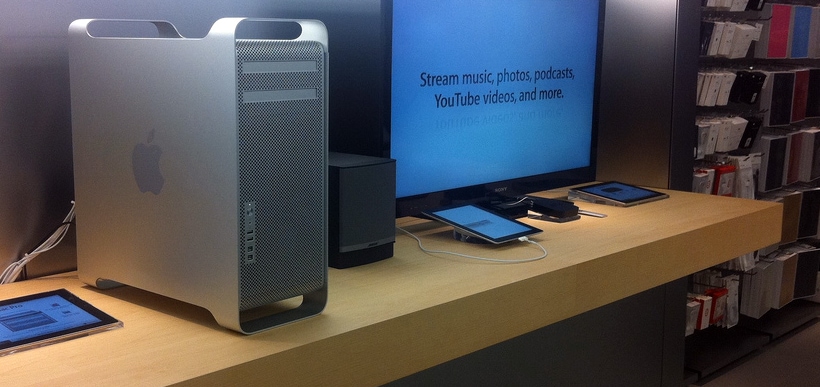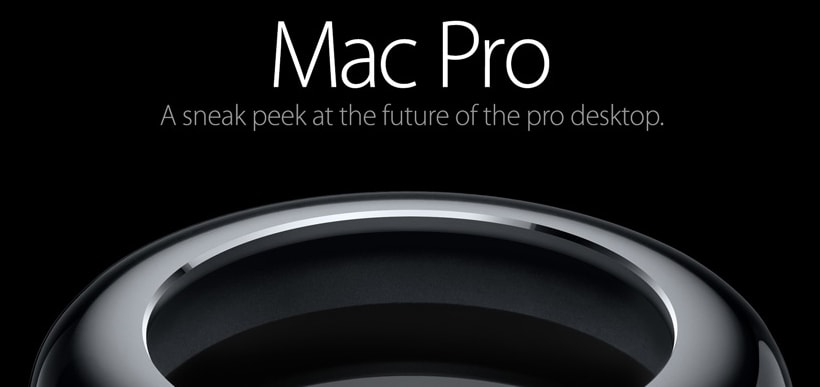It’s a popular misconception, amongst non-Apple computer users and even some Apple fans that purchasing anything Mac will automatically cost more than a PC or Android product. While some Apple devices do cost a bit more, the difference is often not extreme when specifications, technology and quality workmanship are all taken into consideration.
That being said, if your computing needs exceed the average consumer, it is possible to build an extremely powerful (and extremely expensive) Mac in the Apple Store. For those who are wondering what the ultimate in professional-grade Mac computing looks like and costs, a Mac Pro can be ordered for a base price of $3799.00 USD. Add in enough extras for it to keep up with video producers, photographers and other super-users and you can expect to nearly triple that price.
Here is how the configuration of the ultimate Mac Pro came together:
- Processor: Make that two processors. For an extra $2400.00, upgrade to two 3.06 GHz six-core Intel Zeon processors, offering 12 cores in all.
- Memory: If the standard 12GB just won’t cut it, for $1950.00 bump up to a whopping 64GB of DDR3 EDD SDRAM spread out over eight slots.
- Storage: For the ultimate in storage, utilize the four bays in the Mac Pro tower and fill each with a 512GB solid-state hard drive. The first will cost an additional $600.00 with the remaining three at $750.00 a piece.
- Graphics: For the latest in graphics work, ideal for designers and producers, two state of the art ATI Radeon 5770 1GB graphics cards fan be powered by the Mac Pro. Affordable compared to the other upgrades, they’ll cost an extra $250.00.
- Optical Drive: While the Mac Pro comes equipped with a 18x SuperDrive that burns and plays both CDs and DVDs, for times when a second drive is essential, an extra $100.00 will buy two.
- Display: The incredible computing ability of the Mac Pro, especially the quality of the graphics cards, can only be truly appreciated with the right display. A 27-inch LED flat panel Apple Cinema Display pairs with the computer nicely, for an additional $999.00.
- Peripherals: For just $69.00, include the tremendously useful Magic Mouse and Magic Trackpad with the Mac Pro. An additional $20.00 will buy the matching wireless mac compatible keyboard.
- Additional Storage: For those whose job requires connecting to a fiber channel-based or Xsan storage network, order the computer with a quad channel 4GB fiber channel PCI Express card for $1000.00.
- Software: Instead of ordering it from the App Store later, have iWork’s Pages, Numbers and Keynote pre-installed for $19.99 each.
- Support: Such a significant investment needs protection. For $249.00 purchase the AppleCare Protection Plan. An additional $99.00 annually will provide One to One care, offering assistance with setup, file transferring and even training from the nearest Apple Store.
Without adding in other accessories, this incredible, full-featured Mac Pro comes in at $13,844.97 USD. Surprisingly enough, despite its level of customization the Apple Store online still claims it can be ready to go within two to four business days. Shipping is free, too.
While the price of this Mac Pro may seem astronomical, for its capabilities it’s not unreasonable. It’s not the most expensive Mac of all time, either. In 1983, one year before the production of the original Macintosh, the Apple Lisa was released, featuring such advanced technology as protected memory and cooperative multitasking. At the time it cost $9,995.00, which with inflation would be approximately $21,600.00 today.
With Apple, the saying “you get what you pay for” usually applies. Whether you’re configuring the ultimate Mac Pro or picking up a Mac Air, their computers may cost more initially but their durability and technological advancements make them excellent investments.




